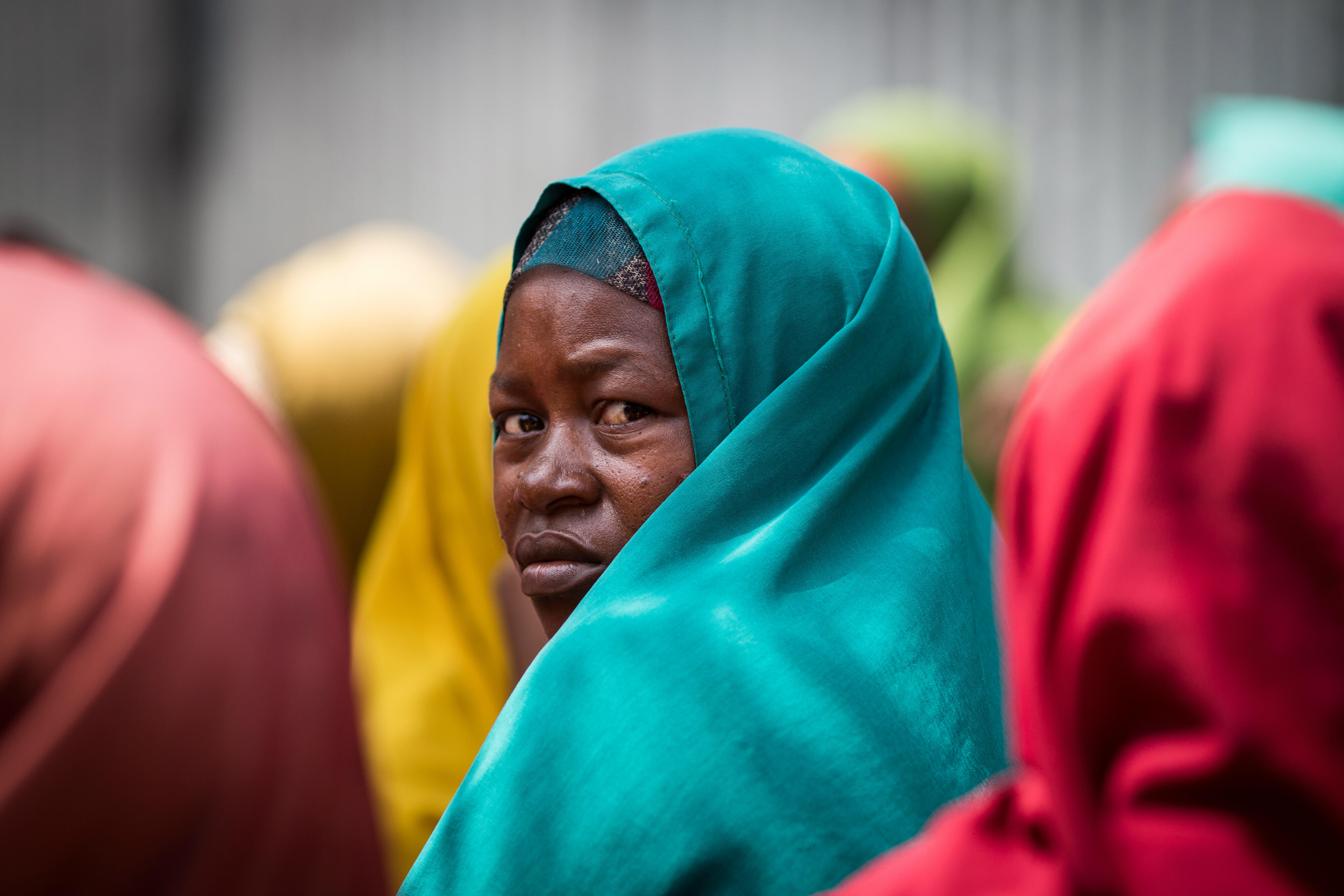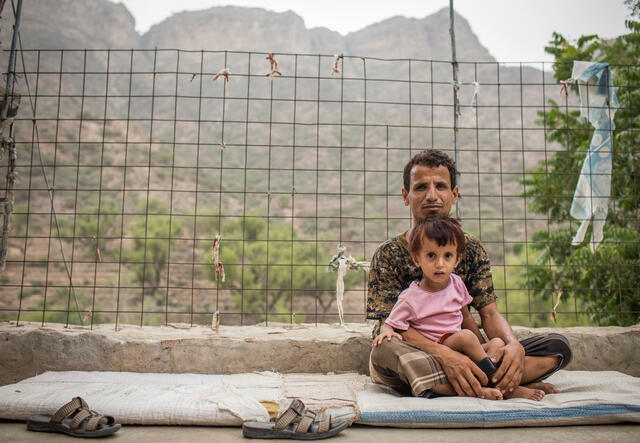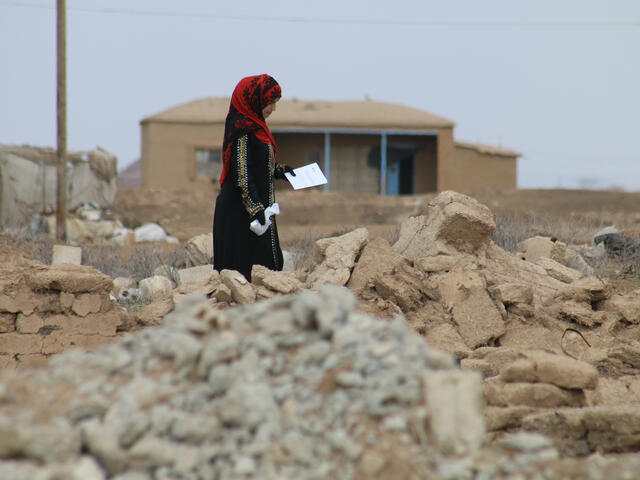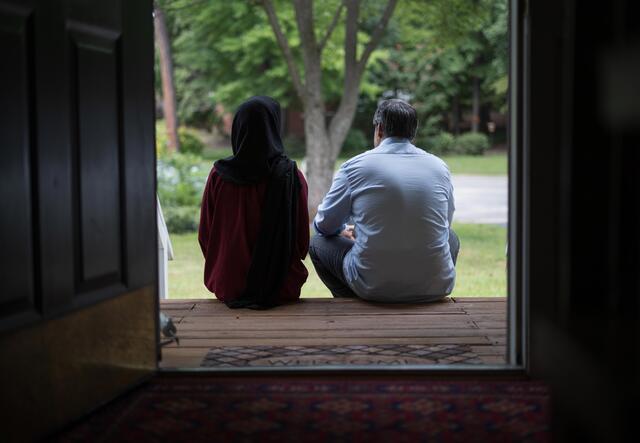
Temporary Protected Status (TPS) is a critical protection tool used to safeguard foreign nationals residing in the United States from deportation when conditions in their home countries make it unsafe to return.
The program was recently in the news when the Biden Administration announced that it would extend and redesignate TPS for Venezuelans and Afghans residing in the U.S. These temporary protective measures will positively impact the lives of nearly 500,000 eligible Venezuelans and nearly 15,000 eligible Afghans under the redesignation.
Get the facts on TPS and what it means for Venezuelans, Afghans and other people forced to flee their homes.
What is Temporary Protected Status (TPS)?
TPS was established by the U.S. Congress in 1990 as a protective immigration status accorded to foreign nationals (a person without U.S. citizenship or nationality). It may be granted to people from countries affected by ongoing armed conflict, an environmental disaster, an epidemic, or other extraordinary and temporary conditions that make a safe return to their home countries impossible.

To be eligible for TPS, a person must already live in the U.S. Specifically, they must have been continuously physically present and residing in the U.S. before the date the status was granted by the Department of Homeland Security (DHS), although the law allows an exception for some brief departures. Individuals who arrive in the U.S. after the date in question are not eligible for TPS. So, for instance, Venezuelans who arrived in the U.S. after July 31, 2023, will not be eligible for this protection and instead will be removed if they are found to not have a legal basis to stay. The initial period of designation for a country must be between six and eighteen months, although TPS may be redesignated for many years.
Foreign nationals who qualify for TPS can live and work in the U.S. legally for the duration of the status. However, TPS holders are not granted a pathway to lawful permanent status.
How is TPS extended?
All TPS designations have an expiration date. DHS is required to extend or terminate these designations 60 days before the status expires. When TPS is extended, DHS can also decide to re-designate it. That change allows individuals who arrived after the prior designation date to apply for the status.
For instance, in July 2021, the Biden Administration announced that it would both extend and re-designate TPS for Yemen. The country was entering its seventh year of war and remains one of the worst humanitarian crises in the world. The previous administration had merely extended TPS for Yemen, meaning anyone who arrived after its original designation date–in 2017–did not qualify. The Biden Administration decision reset that cut off to July of 2021.
Whenever TPS is extended for a country, nationals with TPS must re-register for the status.

How is TPS different from refugee resettlement?
TPS is a program for people already living in the United States. It is also temporary, meaning holders are not given a pathway to permanent status or citizenship.
Refugee resettlement allows people forced to flee their own country to rebuild their lives in the U.S., with many eventually becoming citizens. Fewer than one percent of refugees across the globe have a chance to resettle in the U.S. or another welcoming country.
The Biden Administration has taken steps to rebuild the refugee resettlement program after years of attacks by the previous administration, including by setting an ambitious admissions goal of 125,000 for fiscal year 2023.
Learn more about refugee resettlement.
How is TPS different from asylum?
Asylum seekers are people who are forced to flee their country, but who apply for asylum once they have reached the U.S. They must be able to demonstrate that they are unable or unwilling to return to their country because of persecution or fear that they will suffer persecution due to their race, religion, nationality, membership in a particular social group or political opinion.
Asylum seekers have to make their case in immigration court, a long process that can depend heavily on whether an asylum seeker has legal representation. Once asylum is granted, though, that person becomes an asylee. They are legally allowed to remain in the country without fear of deportation and may apply to become a permanent resident and citizen. They qualify to work, travel abroad and can apply for their spouse or children under the age of 21 to join them.
TPS is temporary and depends on federal extension and redesignation. However, it can safeguard those who have been denied or may be ineligible for asylum but are still in need of lifesaving protection. TPS holders may also apply for asylum, if eligible, to gain a more permanent status.
Learn more about the U.S. asylum system.

Which countries have TPS designations?
Sixteen countries currently have TPS designations. They are Afghanistan, Myanmar (Burma), Cameroon, El Salvador, Ethiopia, Haiti, Honduras, Nepal, Nicaragua, Somalia, South Sudan, Sudan, Syria, Ukraine, Venezuela and Yemen.

Salvadorans, Hondurans and Haitians currently comprise the most TPS holders, totaling nearly 300,000 beneficiaries. El Salvador received TPS designation following two devastating earthquakes in 2001; subsequent factors, including levels of violence similar to major conflict zones around the world, led to its extension and re-designation for over 20 years. Hondurans were offered TPS after a 1998 hurricane took thousands of lives; like El Salvador, ongoing factors including instability and violence led to subsequent extensions and re-designations. Haitians qualifying for TPS have been allowed to stay in the U.S. since the catastrophic 2010 earthquake; conditions in the country have also led to the extension and re-designation of TPS for the country.
Which countries have been given TPS designations by the Biden administration?

Recognizing the dangers that Afghan nationals in the U.S. may face after the change in government, the Biden Administration designated TPS for Afghanistan in March of 2022. The administration also designated TPS for Cameroon, Ethiopia and Ukraine, allowing 75,000 Ukrainians in the U.S. to live and work in the country temporarily.
What else is the United States doing to help Afghan refugees?
Since the Taliban entered Kabul in August 2021, taking control of Afghanistan, the United States has welcomed over 115,000 Afghan nationals forced to flee their country. According to the Council on Foreign Relations, the evacuation was the largest since the Vietnam War.
In order to bring Afghans to safety as quickly as possible, the U.S. admitted most Afghans under a process called “humanitarian parole.” This means that while Afghans are temporarily allowed to stay in the U.S., they are not guaranteed a path to legal permanent residence and eventual citizenship. Instead, newly-arrived Afghans can apply for permanent protection through the U.S. asylum system, which is already facing a backlog of cases.

The IRC urges Congress to take up and pass the Afghan Adjustment Act to provide a pathway to lawful permanent residency for Afghan evacuees. While the Biden administration recently announced a process for Afghans to apply for re-parole, which would allow them to extend their stay for two more years, the temporary nature of parole remains and the legal status of many Afghans on parole will continue to be in limbo.
Afghans could soon lose access to employment, health care, and their legal right to reside in the U.S. once their re-parole terms expire. Many would even be vulnerable to deportation back to a country they fled in fear of persecution—all through no fault of their own.
Afghanistan was originally designated for TPS on March 16, 2022, which was extended and redesignated on September 21, 2023, for 18 more months.
What else is the United States doing to help Venezuelans?
The IRC has welcomed the Biden administration’s decision to extend and redesignate TPS for Venezuelans. This decision will positively impact the lives of nearly 500,000 eligible Venezuelans, giving them the opportunity to work, rebuild their lives and contribute to their new communities.
“The IRC has been working with civil society and government partners to develop approaches to humanitarian reception of asylum seekers that are tailored to the local context, inform the establishment of minimum standards and contribute to national coordination,” says Olga Byrne, IRC senior director of asylum and legal protection for resettlement, asylum and integration (RAI).
“We encourage the Biden Administration to continue providing alternative pathways to protection and expand TPS for others who cannot return to their home countries due to safety concerns.”
What else is the United States doing to help Ukrainian refugees?
On April 21, 2022, the Biden Administration launched Uniting for Ukraine, a new streamlined process that allows Ukrainians with U.S.-based sponsors to request entry into the U.S. This sponsor-based parole process has welcomed over 100,000 Ukrainian refugees. The war in Ukraine is causing the fastest-growing refugee crisis in a generation, with more than 6.2 million refugees fleeing the country.

How does the IRC help?
The International Rescue Committee offers high-quality, low-cost immigration legal services and citizenship assistance in 28 cities across the United States. As part of our immigration programs, the IRC helps eligible individuals apply for and renew their TPS status, identifies TPS holders for other forms of relief, and assists with legal services to seek these forms of relief where applicable.



